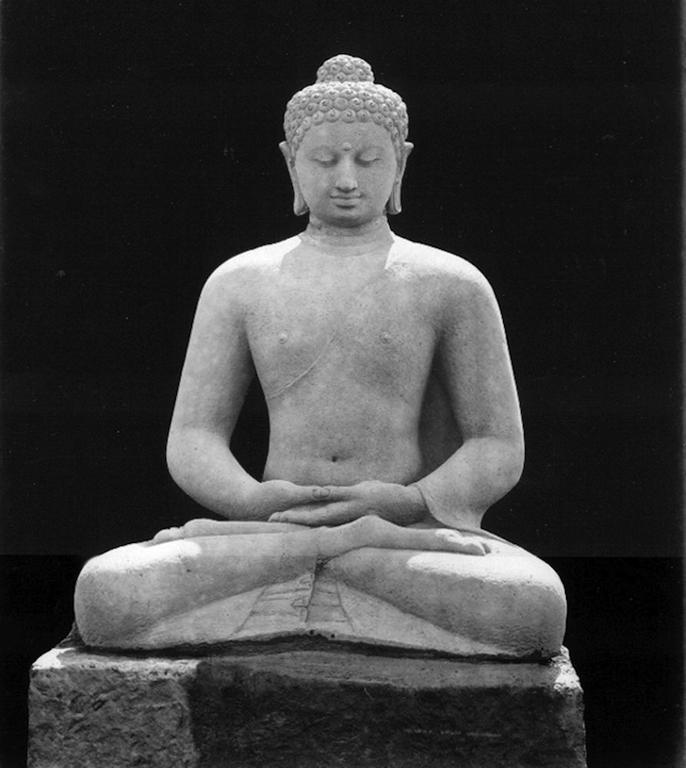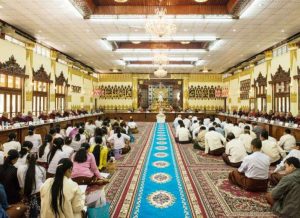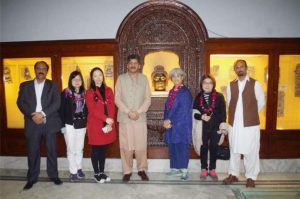
One day my daughter asked me, “Dad, I know ‘Western’ religion emphasizes belief in God. However, if someone asks me what Buddhists believe, what should I tell him?” This should be a simple question for a Buddhist, but I could not find a clear answer to satisfy my daughter at that moment.
I later asked many people the same question, some Buddhist and some not. I got at least 20 different answers, as follows:
– belief in Shakyamuni Buddha
– belief in Shakyamuni Buddha’s teachings
– belief in truth
– belief in True Nature
– belief in emptiness
– belief in mind
– belief in the Law of Cause and Effect
– belief in wisdom
– belief that we can be a Buddha too
– belief in the Three Jewels
– belief in the principle of non-duality
– belief in Amitabha Buddha
– belief in Guanyin
Why are the answers so diverse? I think it is because there are 84,000 kinds of Buddhist teachings with different benefits for people of varying interests, capacities, and aptitudes; thus people will have different understandings of Buddhism.
Pure Land Buddhism, which is one of the Mahayana schools, emphasizes faith. What do Pure Land devotees believe in? While this may seem a basic question, it is not easy to reach a consensus on this, nor on the meaning of faith. Many Pure Land practitioners give different responses, such as:
– belief in Amitabha Buddha
– belief in the existence of Amitabha Buddha and his Land of Bliss
– belief in Amitabha’s power of deliverance
– belief in Amitabha’s wisdom
– belief in Amitabha’s name
The answers all relate to Amitabha Buddha, who receives all beings in his Pure Land. However, Master Shandao, the de facto founder of the Pure Land school of Buddhism in China, has an “offbeat” answer, as stipulated in his Commentary on the Contemplation Sutra.
Master Shandao tells us there are two kinds of deep faith, also known as genuine faith, in Pure Land Buddhism. It is interesting to note that the first kind of deep faith refers to the practitioners’ aptitude, while the second refers to the deliverance of Amitabha Buddha. The first identifies the problem; the second supplies the solution.
“The first kind of deep faith: I am an iniquitous ordinary being subject to endless rebirths. Since time immemorial I have died and been reincarnated, without hope of leaving the cycle of rebirth. The second kind of deep faith: Amitabha Buddha embraces and receives all sentient beings with his 48 Vows. Without doubt or fear, we are certain of rebirth in the Pure Land by relying on the power of his vows.”*
What this tells us is that it is only after Pure Land practitioners have truly understood and admitted the impossibility of liberating themselves from the cycle of rebirth through their own efforts (self-power) that they will be open to fully accepting and trusting Amitabha’s offer of deliverance (other-power).
Relationship between the Two Kinds of Deep Faith
While we may well expect the second kind of deep faith to be the first, why did Master Shandao put practitioners first and Amitabha Buddha second? I think it is quite simple.
Before we can believe and trust a doctor, we should ask ourselves whether we are really sick. If we do not believe we are patients, there is no point in saying whether we trust the doctor or not. Similarly, if you do not believe you are suffering, you will not be motivated to be reborn in the Land of Bliss. Even if you believe in your own suffering, you may not believe that the primary cause is the cycle of rebirth. Even if you do believe in all of the above, you may not believe you cannot be liberated from the cycle of birth and death through your own effort. In this respect, if you do not have the first kind of deep faith, it is meaningless to proceed to the second.
Master Shandao reminds us that we are subject to endless rebirths. We have been in each of the Six Realms many times. In our past lives, we have studied all the sutras and practiced all the virtues. We have tried our best to hold the precepts, practice meditation, and seek wisdom, all in the attempt to attain enlightenment and emancipation—but in vain. It is time to admit that we have exhausted every practice, and that there is no hope of leaving the cycle of rebirth through our own effort.
If we hesitate to believe that we live in the Saha World, with its woeful samsaric nature, and fail to acknowledge our pathetic state therein, we will not give up all our previous virtuous self-power practices (both meditative and non-meditative). It then becomes very difficult to sincerely wish for, let alone have complete reliance on, Amitabha’s power of deliverance.
The two kinds of faith are interrelated and equally important. Like the two sides of a coin, they are inseparable. However, most Pure Land practitioners almost always neglect the first kind of deep faith. Thus their faith in Amitabha’s deliverance is not deep enough, and they will continue to practice through self-power.
In terms of our lives in this Saha World, it is the first kind of deep faith that often opens us up to the second deep faith. A crisis in our self-power practices leads to a deep realization of our own limitations, which then opens our minds and hearts to faith in Amitabha’s deliverance.
* From Dharma Master Huijing, (Householder Guoshu, trans., Householder Jingtu, ed.), “What Is to Recite ‘Single-Mindedly, Without Deviation’?”; see Pure Land Buddhism, p. 24.






